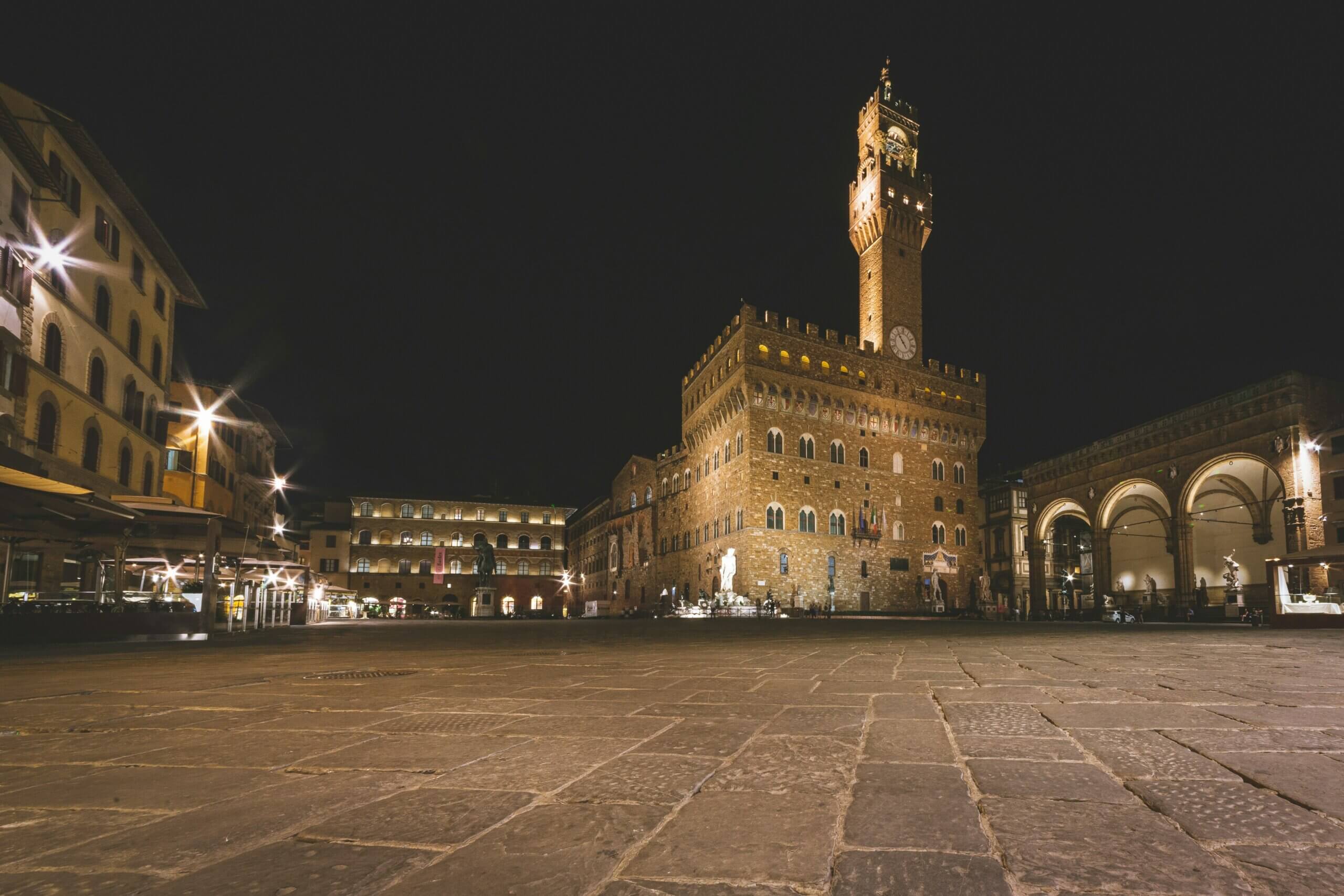Savouring Italian Piazzas: A Taste of Authenticity and Charm
Embarking on a journey through Italy’s piazzas means stepping into the vibrant heart of its culture, history, and everyday life. These open squares aren’t just physical spaces; they act as the social and architectural epicenters of Italian cities and towns, perfectly embodying the essence of the Italian way of life.

From the grand and bustling to the quaint and serene, each piazza tells its unique story, serving up a taste of authenticity and charm that’s unmistakably Italian. For those looking to dive deeper into the rich tapestry of Italy’s heritage, guided Italy tours offer an immersive way to explore these captivating squares, providing insights into their historical significance, architectural beauty, and the lively traditions that continue to thrive within them.
Piazza San Marco, Venice
Piazza San Marco, or St. Mark’s Square, is arguably the most majestic square in Italy, surrounded by the opulent Basilica di San Marco, the historic Campanile, and the Doge’s Palace. It’s a melting pot of culture, art, and history, where locals and tourists gather to enjoy the orchestral melodies, feed the pigeons, and sip espresso.
Bathed in daylight or shrouded in nighttime mystique, Piazza San Marco captures the spirit of Venice. For those venturing to explore the Venetian charm after soaking in the Renaissance allure of Florence, the train from Florence to Venice offers a scenic and convenient journey, bridging the artistic grandeur of two of Italy’s most captivating cities.
Piazza del Campo, Siena
Known for the biannual Palio horse race, Piazza del Campo stands as the primary public space in Siena’s historic center and ranks among Europe’s finest medieval squares.
Its unique shell shape, surrounded by Gothic buildings, forms an architectural marvel that has withstood time. Whether during the electrifying atmosphere of the Palio or in the square’s more tranquil moments, its charm and centuries of history are palpable.
Piazza della Signoria, Florence
In the heart of Renaissance Florence lies Piazza della Signoria, an L-shaped square that has long been the focal point of political life.

Dominated by the imposing Palazzo Vecchio and the adjacent Uffizi Gallery, it’s an open-air museum graced with historical statues, including a replica of Michelangelo’s David. It’s where art, history, and politics converge, offering visitors a deep connection to Florence’s past and present.
Piazza Navona, Rome
Built on the site of the Stadium of Domitian, Piazza Navona is a testament to Baroque Roman architecture, art, and culture. Alive with street artists, vendors, and performers, its atmosphere is vibrant.
Centered around three magnificent fountains, including Bernini’s Fountain of the Four Rivers, Piazza Navona is a favourite for its bustling cafe culture and as a window into Roman life.
Piazza dei Miracoli, Pisa
Often overshadowed by its iconic Leaning Tower, Piazza dei Miracoli, or the Square of Miracles, is a UNESCO World Heritage site that offers much more. It encompasses the Duomo, the Baptistry, and the Camposanto – remarkable examples of medieval architecture. Its pristine lawns and stark white buildings provide a breathtaking scene, offering a peaceful setting to admire medieval Italy’s architectural and artistic feats.
Piazza San Carlo, Turin
Known as Turin’s living room, Piazza San Carlo is an elegant, spacious square surrounded by Baroque buildings and historic cafes. With the equestrian statue of Emanuele Filiberto at its center and the twin churches of Santa Cristina and San Carlo Borromeo at one end, it displays architectural harmony. It’s a locale of refined beauty, where locals converge for an aperitivo, embracing the leisurely pace of Italian life.
Piazza del Plebiscito, Naples
Flanked by the Royal Palace and the Church of San Francesco di Paola, Piazza del Plebiscito is Naples’ largest square. It’s a grand open space of significant historical importance, offering stunning views of the Gulf of Naples. As a venue for concerts and public events, it embodies the vivacious spirit and resilience of the Neapolitan people.
Further Exploration
Adding to this exploration of Italy’s heart through its piazzas, let’s delve deeper into more squares that enrich Italy’s cultural landscape:
Piazza Maggiore, Bologna
At the core of Bologna, Piazza Maggiore is surrounded by significant buildings like the Basilica di San Petronio and Palazzo d’Accursio, standing as a harmonious blend of history and social life. Here, the Bolognese culture unfolds through daily gatherings, open-air screenings during film festivals, and vibrant markets, with the Neptune Fountain adding a splash of Renaissance splendor.
Piazza Duomo, Milan
In Milan’s bustling heart lies Piazza Duomo, dominated by the magnificent Milan Cathedral (Duomo di Milano). This square attracts visitors with its Gothic spires and rooftop views. Encircled by elegant buildings, including the Galleria Vittorio Emanuele II, it’s a dynamic place for cultural events, demonstrations, and celebrations, reflecting Milan’s spirited essence.
Piazza Venezia, Rome
In the vibrant heart of Rome, Piazza Venezia serves as a remarkable crossroads where history, architecture, and the energetic pace of city life intersect. Dominated by the grand Monument to Vittorio Emanuele II, affectionately known as “Il Vittoriano”, this square presents a grand introduction to Rome’s rich tapestry of ancient and Renaissance heritage. The ceaseless movement of traffic and the steady flow of pedestrians from several major thoroughfares reflect the enduring dynamism that Rome has always symbolized. More than just a gateway to the Roman Forum and Capitoline Hill, Piazza Venezia acts as a vibrant stage for Italy’s unfolding contemporary stories, intricately woven with the threads of history and the vibrant pulse of modern Roman life.
Savouring Italian Piazzas
The exploration of Italy’s piazzas offers a mesmerising journey through the country’s vibrant heart and soul, where architectural grandeur meets the zest of daily life.
Each square, from Venice’s Piazza San Marco to Milan’s Piazza Duomo, narrates a unique story that reflects the rich tapestry of Italian history, culture, and social interaction. These piazzas, bustling hubs of community life and cultural events, encapsulate the quintessence of Italian charm and authenticity, making them indispensable to truly understanding and experiencing Italy’s spirit.
As visitors from all walks of life wander these squares, they immerse themselves in Italy’s profound beauty and legacy, discovering a living, breathing museum of human creativity and communal joy.
